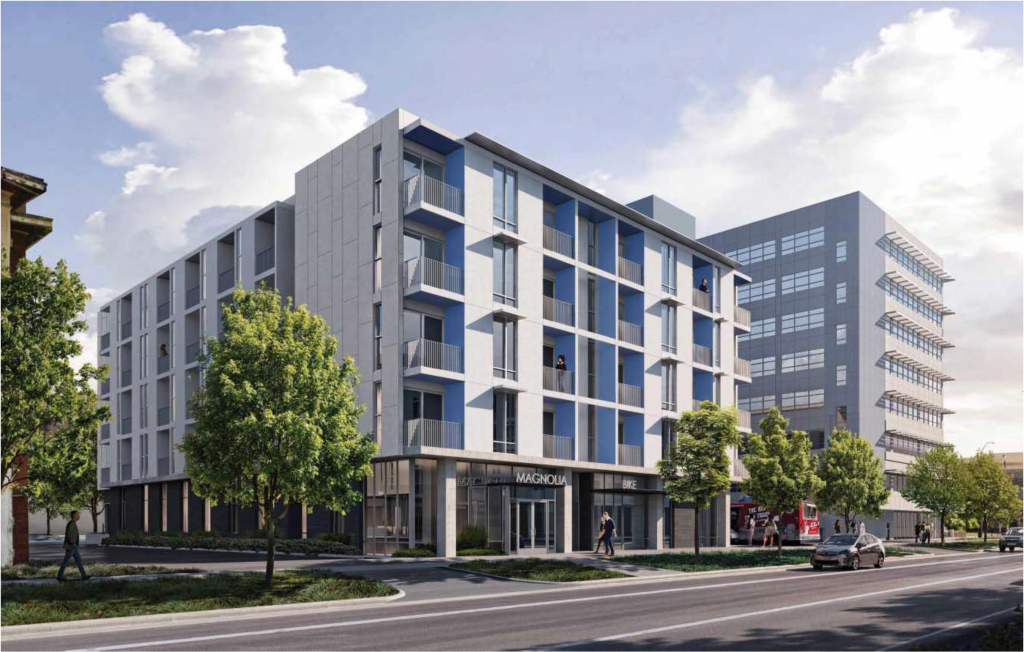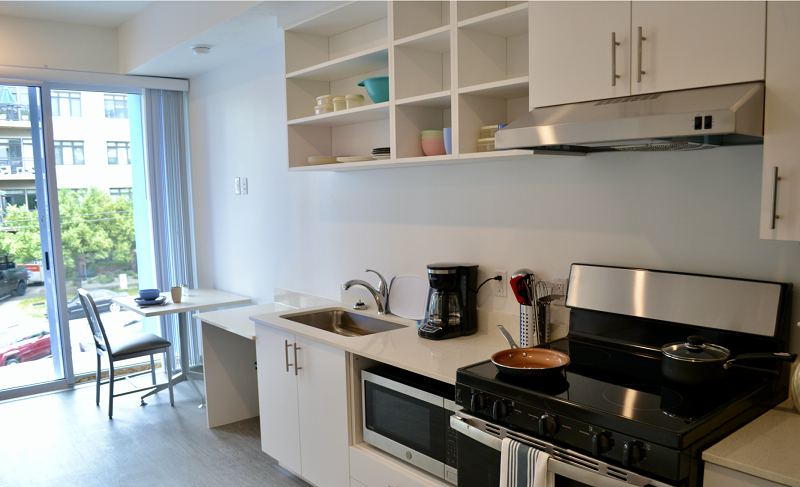
An inside source provides Utah Stories with an inside look into the reality of the Magnolia Apartments.
Salt Lake City, along with the organization Shelter the Homeless, have been working to build “permanent supportive housing units for the chronically homeless”.
The Housing First Model is an excellent idea in its basic theory: give temporary homes to the homeless first so that they can work on the “bigger issues” such as substance abuse and mental disorders. But the devil (as usual) is in the details. The homeless should receive housing comparable to their economic input into society. The chronically homeless should see and receive a big carrot for getting into the workforce.
The new face of Housing First is the Magnolia Apartments. Completed last year for $16.4 million. The apartment complex is gorgeous. Every unit offers a balcony with city views and quartz countertops. The per unit cost of the Magnolia is $265,000. The fair market value of each apartment would very likely be upwards of $350,000. “These units offer the chronically homeless a greater sense of dignity than they have had before,” said Laurie Hopkins Executive Director of Shelter the Homeless to Utah Stories.
The Reality of the Magnolia Apartments According to An Inside Source
But the reality is that the Magnolia is an abject failure. An inside source has reached out to Utah Stories and says,
“The place is trashed, the rooms are torn apart and the drug use is rampant. The Magnolia has two 6 hr days of security only. No bags are checked so drugs and weapons are coming in 24/7. The money that was spent on the Magnolia to make it successful did not work. The majority of the people are still living like they are homeless. Only a few work so the rest of the residents go out during the day and panhandle. Prostitution is going on and drug dealers get into the building and into the apartments. The Magnolia is not working and the city should look at this as a failure unless some very serious changes are made.”

What Provides a Low-Income or Homeless Person Dignity?
This anonymous person who has witnessed the rapid decline of the Magnolia made the comments by Laurie Hopkins (Executive Director of Shelter the Homeless) stand out to me, that these incredibly nice units offer homeless people more “dignity in their housing”. But now prostitution and drug use and “trashing of the rooms” is regularly occurring. There is no dignity in receiving something for free, then trashing it.
Theodore Dalrymple wrote an epic book on poverty called Life on The Bottom, based on his experiences working at a hospital for low-class residents in England. Dalrymple writes that poverty is as much or more a condition of a person’s spirit, as it is a condition for material needs.
If a person’s spirit is impoverished: craving and abusing drugs and instant gratification; involved in rampant violence or domestic abuse; lacking in morals against theft, property, etc. then what assistance is really being provided by putting this person in a very nice, expensive apartment? The “dignity” of this apartment is shameful because it is being financed by the labor of hard-working Utah taxpayers.
A person gains “dignity” by working and witnessing the fruits of their labors go directly into their housing. Toughing out difficult job/life situations builds a person’s character. How is it that it seems that these ideals are forgotten in the current solution?
There is no dignity in providing a free home to a chronically homeless person who has no intention or desire or incentive to get clean and get a job. A free $350,000 worth Magnolia apartment provided with little or no strings attached is only the height of foolishness.
WATCH THE VIDEO
How Does a Person Qualify To Be Considered Chronically Homeless?
Just who are the “chronically homeless”? Those who can prove that they have been homeless on numerous occasions for at least three years.
While this all sounds nice in theory, left out of this equation are the working poor. The question is why should “chronically homeless” individuals receive a huge reward in a housing subsidy of up to $2,300 per month, while those who work some of the most difficult jobs and the longest hours receive little to no support? This model incentivizes homelessness and the ancillary problems of drug addiction and crime. Examining the much bigger problems Seattle, Portland, and San Francisco are suffering, which have embraced Housing First to an even greater degree than Salt Lake City clearly shows, that the model is failing.
In our previous article, we provided an alternative solution to our housing crisis in Utah, by installing prefabricated housing in empty lots. This model would offer $50,000 or less housing units, with rent collected much more in proportion to the actual costs. But the Housing First model would require some reforms and basic parameters for participation (such as the requirement to find work or work on-site in the first 90 days or move to perhaps a drug camp. Camping in the metro Salt Lake City should be illegal, but with a clear path for where the unsheltered can go to gain shelter and support.
Current law and zoning restrictions prohibit any further homeless shelters from being built in Salt Lake County. Another basic, big temporary shelter should be provided immediately. This shelter could be as simple as a fence around a 40-acre parcel of land with tents as Denver, Colorado is doing with their safe outdoor spaces initiative.
A pragmatic approach to solving our housing crisis could then get the Utah State Legislature on board who is sitting on a $2 billion state tax surplus. Salt Lake City desperately needs more deeply affordable housing for the surging homeless population and low-income residents, it’s time they stop providing lip service and take action.
Story Amendment made on July 26th
There is a housing affordability crisis. This crisis could be solved in a matter of months if zoning laws were changed to allow for empty fields to be leased by the city to allow for outdoor camping and/or prefabricated portable housing. Read our previous story for more on that. The main problem is now NIBYism. (Not in my backyard). This is essentially elitists who are unwilling to budge on any project that could add more density to their neighborhood. City Weekly recently offered an excellent story on the frontlines of that current battle.
RELATED CONTENT
Why “Deeply Affordable” Housing Is Not Being Built in Utah and it Won’t be Built Anytime Soon
Did Salt Lake City Mayor Erin Mendenhall Lie to the Homeless People?
Utah Homelessness Getting Out of Control: What are the solutions?
If Salt Lake City’s Homeless Had a Say in The over $20 Million Spent on Them
Why Is the 600% Increase in Homeless Spending Resulting in More Homelessness in Utah?
SUPPORT LOCAL JOURNALISM AND SUBSCRIBE TO PRINT MAGAZINE
Subscribe to Utah Stories weekly newsletter and get our stories directly to your inbox





